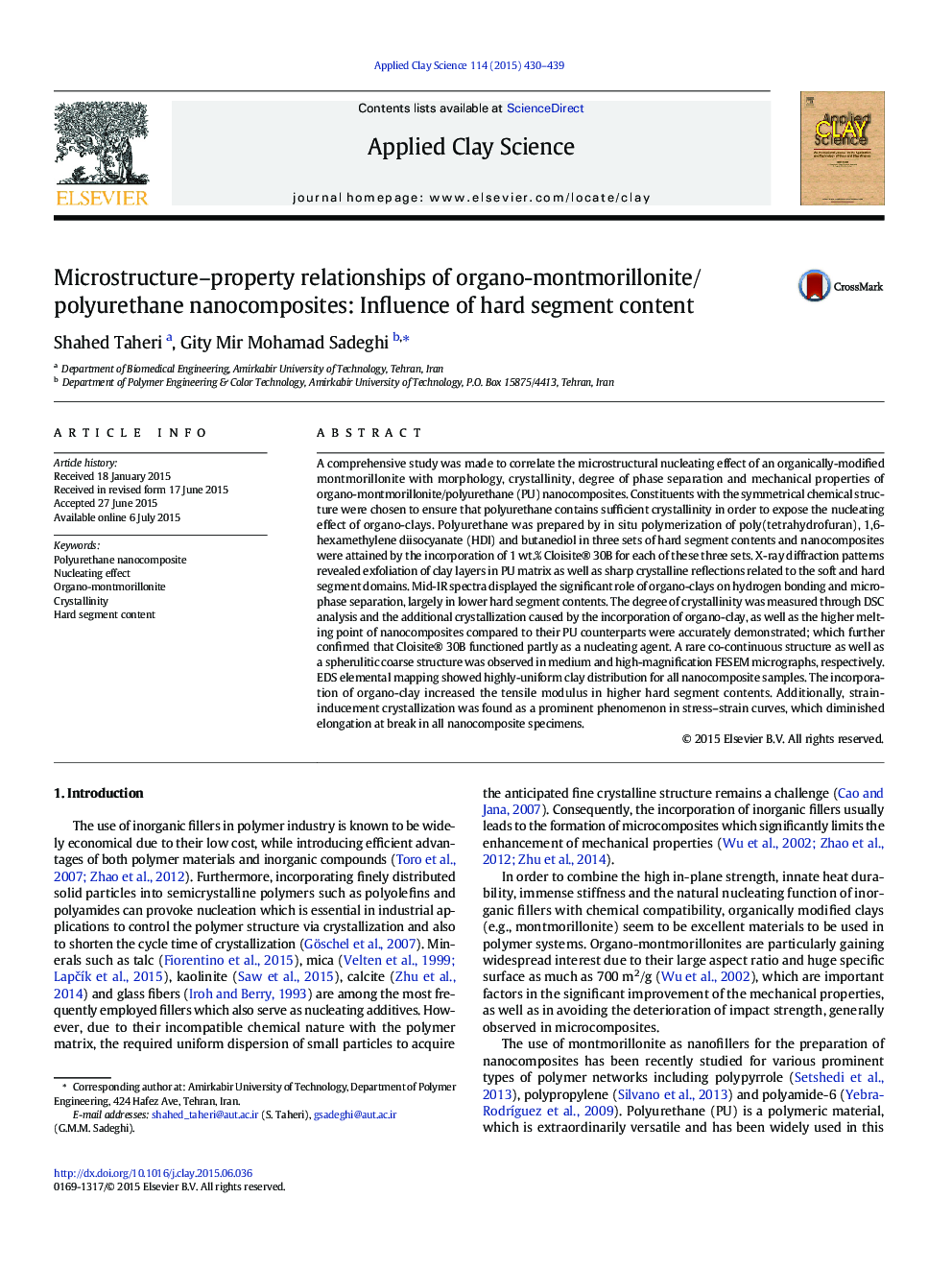| Article ID | Journal | Published Year | Pages | File Type |
|---|---|---|---|---|
| 1694393 | Applied Clay Science | 2015 | 10 Pages |
•Semicrystalline PUs were achieved by employing structurally symmetrical materials.•Clay nucleation led to additional soft segment crystallinity in nanocomposites.•Outstanding microphase separation was achieved in higher hard segment contents.•Crystalline regions of the hard domain became prominent in higher HS contents.•Clay incorporation enhanced tensile modulus in higher hard segment contents.
A comprehensive study was made to correlate the microstructural nucleating effect of an organically-modified montmorillonite with morphology, crystallinity, degree of phase separation and mechanical properties of organo-montmorillonite/polyurethane (PU) nanocomposites. Constituents with the symmetrical chemical structure were chosen to ensure that polyurethane contains sufficient crystallinity in order to expose the nucleating effect of organo-clays. Polyurethane was prepared by in situ polymerization of poly(tetrahydrofuran), 1,6-hexamethylene diisocyanate (HDI) and butanediol in three sets of hard segment contents and nanocomposites were attained by the incorporation of 1 wt.% Cloisite® 30B for each of these three sets. X-ray diffraction patterns revealed exfoliation of clay layers in PU matrix as well as sharp crystalline reflections related to the soft and hard segment domains. Mid-IR spectra displayed the significant role of organo-clays on hydrogen bonding and microphase separation, largely in lower hard segment contents. The degree of crystallinity was measured through DSC analysis and the additional crystallization caused by the incorporation of organo-clay, as well as the higher melting point of nanocomposites compared to their PU counterparts were accurately demonstrated; which further confirmed that Cloisite® 30B functioned partly as a nucleating agent. A rare co-continuous structure as well as a spherulitic coarse structure was observed in medium and high-magnification FESEM micrographs, respectively. EDS elemental mapping showed highly-uniform clay distribution for all nanocomposite samples. The incorporation of organo-clay increased the tensile modulus in higher hard segment contents. Additionally, strain-inducement crystallization was found as a prominent phenomenon in stress–strain curves, which diminished elongation at break in all nanocomposite specimens.
Graphical abstractFigure optionsDownload full-size imageDownload as PowerPoint slide
